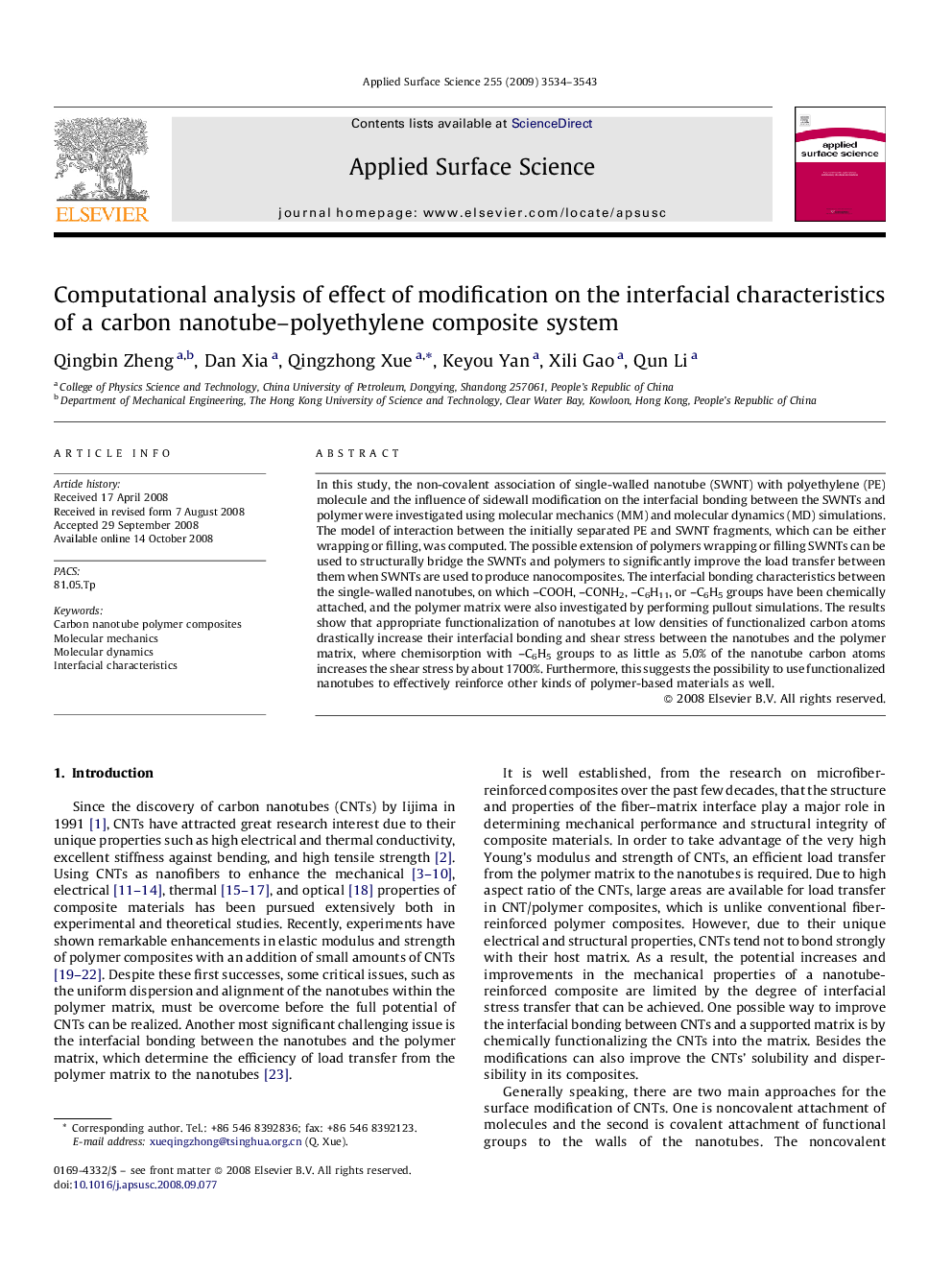| Article ID | Journal | Published Year | Pages | File Type |
|---|---|---|---|---|
| 5364826 | Applied Surface Science | 2009 | 10 Pages |
In this study, the non-covalent association of single-walled nanotube (SWNT) with polyethylene (PE) molecule and the influence of sidewall modification on the interfacial bonding between the SWNTs and polymer were investigated using molecular mechanics (MM) and molecular dynamics (MD) simulations. The model of interaction between the initially separated PE and SWNT fragments, which can be either wrapping or filling, was computed. The possible extension of polymers wrapping or filling SWNTs can be used to structurally bridge the SWNTs and polymers to significantly improve the load transfer between them when SWNTs are used to produce nanocomposites. The interfacial bonding characteristics between the single-walled nanotubes, on which -COOH, -CONH2, -C6H11, or -C6H5 groups have been chemically attached, and the polymer matrix were also investigated by performing pullout simulations. The results show that appropriate functionalization of nanotubes at low densities of functionalized carbon atoms drastically increase their interfacial bonding and shear stress between the nanotubes and the polymer matrix, where chemisorption with -C6H5 groups to as little as 5.0% of the nanotube carbon atoms increases the shear stress by about 1700%. Furthermore, this suggests the possibility to use functionalized nanotubes to effectively reinforce other kinds of polymer-based materials as well.
